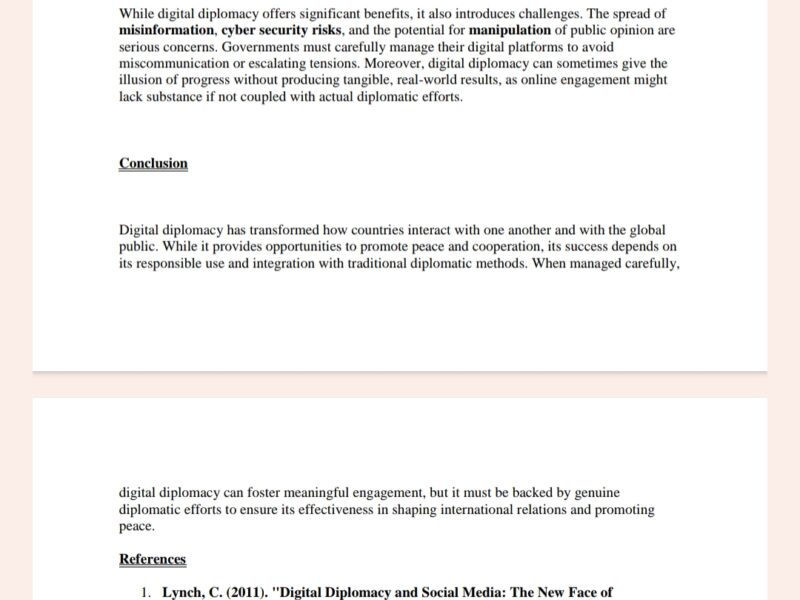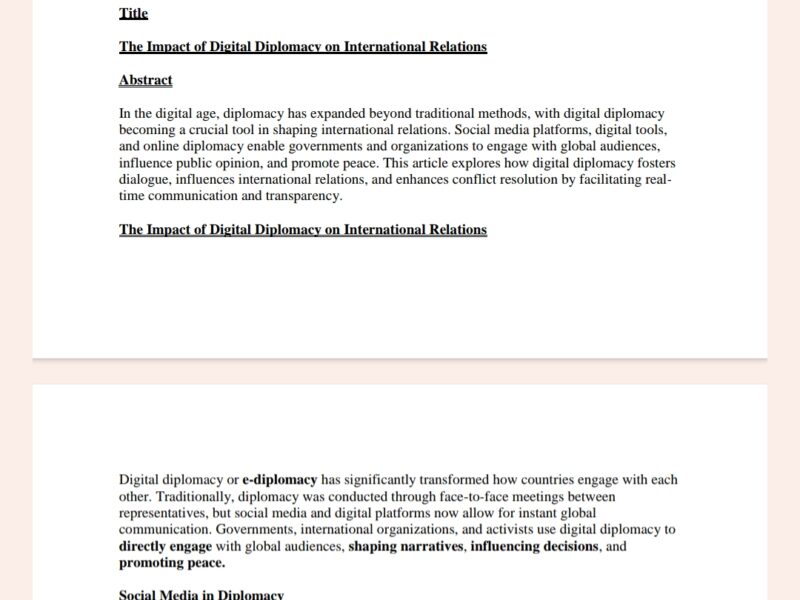The Impact of Digital Diplomacy on International Relations
Digital diplomacy or e-diplomacy has significantly transformed how countries engage with each other. Traditionally, diplomacy was conducted through face-to-face meetings between representatives, but social media and digital platforms now allow for instant global communication. Governments, international organizations, and activists use digital diplomacy to directly engage with global audiences, shaping narratives, influencing decisions, and promoting peace.
Social Media in Diplomacy
Social media platforms like Twitter, Facebook, and Instagram are central to modern diplomatic engagement. These platforms enable leaders and foreign ministries to communicate their positions instantly, share updates, and engage with global citizens. Social media has democratized diplomacy by allowing governments to bypass traditional media and communicate directly with the public. A key example is the Arab Spring in 2011, where social media mobilized protests across the Middle East and North Africa, with global awareness spreading through digital platforms, influencing international response and diplomatic relations.
Conflict Resolution and Peace building
Digital diplomacy also plays a pivotal role in conflict resolution and peace building. Online platforms provide spaces for dialogue that may not otherwise occur in traditional diplomatic settings. For instance, organizations like UNICEF use digital platforms to engage affected communities, raise awareness, and distribute educational resources aimed at promoting peace and cooperation. These digital tools provide real-time feedback, helping to address grievances and foster quicker, more collaborative responses to conflict situations.
Challenges of Digital Diplomacy
While digital diplomacy offers significant benefits, it also introduces challenges. The spread of misinformation, cyber security risks, and the potential for manipulation of public opinion are serious concerns. Governments must carefully manage their digital platforms to avoid miscommunication or escalating tensions. Moreover, digital diplomacy can sometimes give the illusion of progress without producing tangible, real-world results, as online engagement might lack substance if not coupled with actual diplomatic efforts.
Conclusion
Digital diplomacy has transformed how countries interact with one another and with the global public. While it provides opportunities to promote peace and cooperation, its success depends on its responsible use and integration with traditional diplomatic methods. When managed carefully, digital diplomacy can foster meaningful engagement, but it must be backed by genuine diplomatic efforts to ensure its effectiveness in shaping international relations and promoting peace.
References
1. Lynch, C. (2011). “Digital Diplomacy and Social Media: The New Face of Diplomacy.” Foreign Affairs.
This article explores how digital diplomacy has reshaped the way governments interact with foreign publics and other states, particularly during the Arab Spring. It highlights the increasing importance of social media as a diplomatic tool.
2. Barysch, K., & De Vries, M. (2015). “Digital Diplomacy and Its Impact on Global Governance.” European Union Institute for Security Studies (EUISS) Paper.
This paper delves into how the EU uses digital platforms for diplomatic engagement, showcasing both the advantages and challenges in the realm of public diplomacy and international relations.
3. Norris, P. (2008). “The Global Network Society: The Impact of Digital Platforms on Global Diplomacy.” Journal of International Communication.
Norris discusses the evolving role of digital technologies in diplomacy and international relations, emphasizing the positive impact of digital tools on conflict resolution and the mediation of international disputes.



